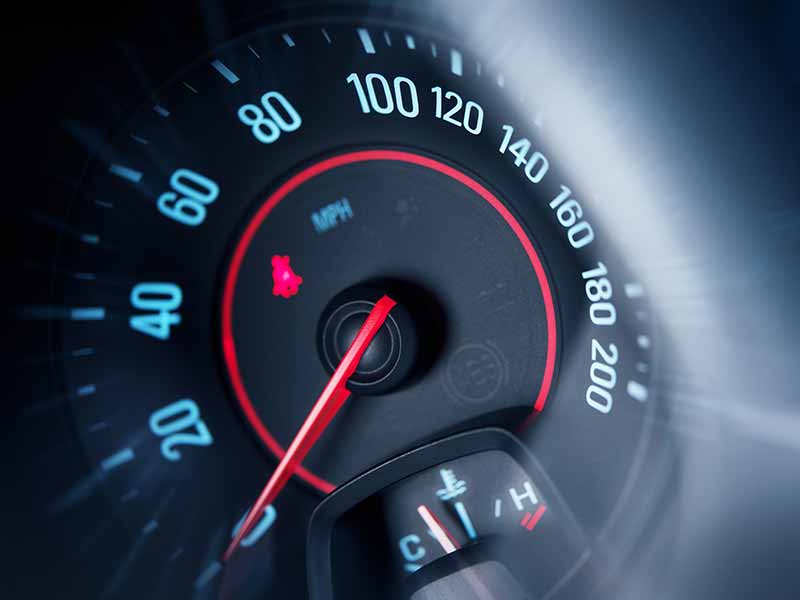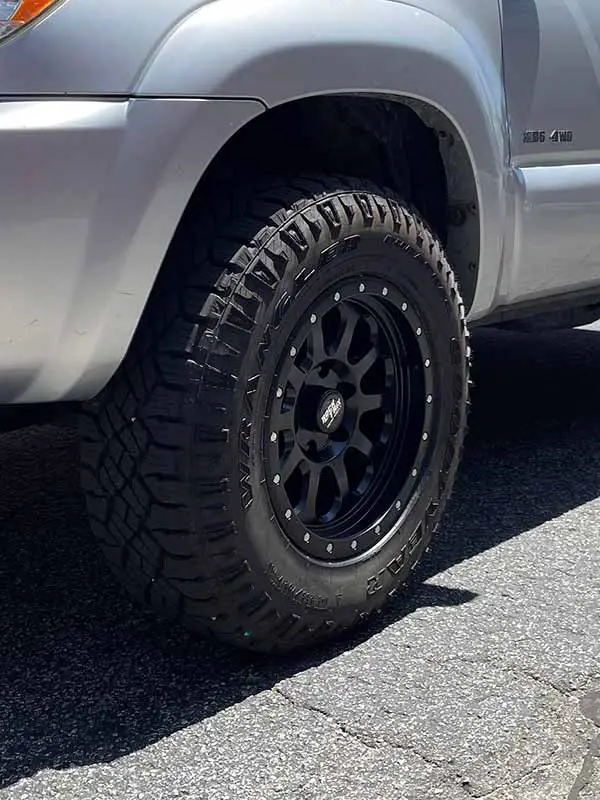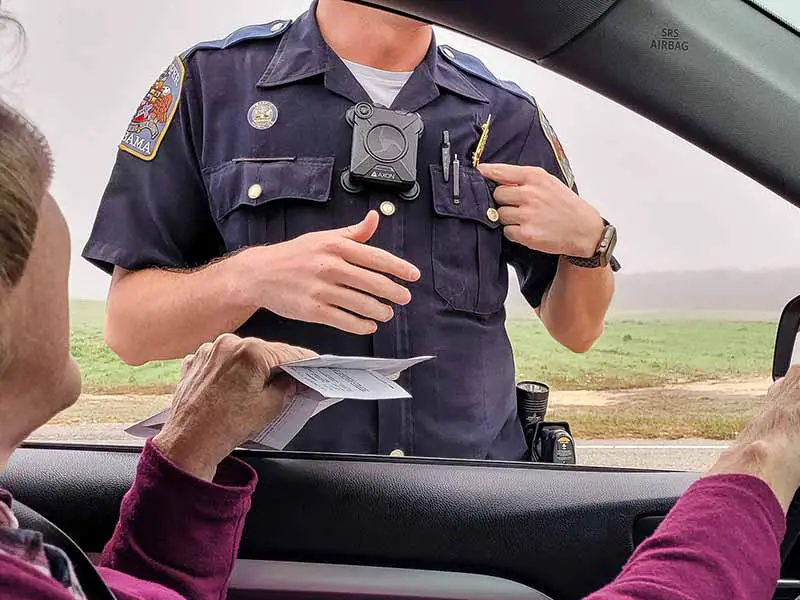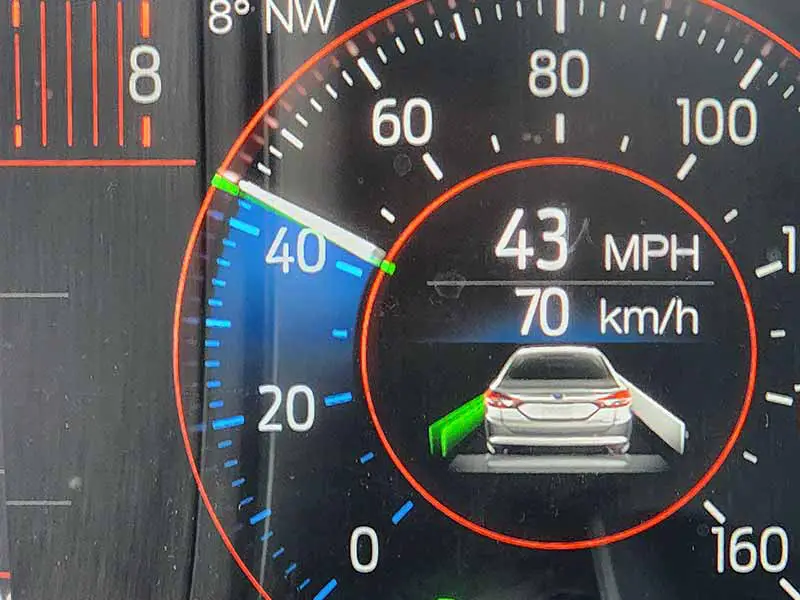Your car’s speedometer depends on the size of your tires to show you the correct speed. If your tires are bigger or smaller than the factory-installed ones, your speedometer will not be showing the right speed.
Do Bigger Tires Make Your Speedometer Faster Or Slower?
Bigger tires make your speedometer slower due to their larger rolling circumference. The car’s Engine Control Unit (ECU) still uses the original tire size to calculate speed, leading to an underestimate of the actual distance covered and a slower displayed speed.
In this article, we explore the connection between tire size and speedometer accuracy, delving into the mechanics of speedometers and how different tire sizes can impact their readings.
We also highlight the importance of accurate speedometer readings for safety, legality, and fuel efficiency, and discussed ways to correct any discrepancies resulting from changes in tire size.
Let’s take a closer look.
Speedometer Error Calculator
How Speedometers Work
It might seem like some kind of magic, but there’s really some nifty science and mechanics behind it. The speedometer gets its info from the vehicle’s transmission, which is connected to your wheels. When your wheels spin, they send a signal to a part called the “speed sensor.”
This speed sensor then sends an electrical signal to your car’s computer, called the ECU (Engine Control Unit). The ECU processes this information and then sends another signal to the speedometer on your dashboard. And voilà! Your speedometer shows you how fast you’re going.
Now, the ECU doesn’t just take that info from the speed sensor and display it as is. It actually does some math first. See, the ECU has been programmed with specific info about your car, like its gear ratios and tire size. So, it uses that info to calculate your speed based on how fast your wheels are spinning. This means that if you change the size of your tires, the ECU might not have the right info to make that calculation accurately anymore.
So, now you might be wondering how your tire size is connected to your speedometer readings. Well, the ECU uses the tire size to figure out how far your car travels with each rotation of the wheels. That’s because the bigger the tire, the more ground it covers in a single rotation. So, if you have bigger tires than the ones your car came with, your speedometer might think you’re going slower than you actually are. On the flip side, if you have smaller tires, the speedometer might think you’re going faster.

Bigger Tires and Speedometer Readings
Let’s dig a little deeper into why bigger tires can make your speedometer show a slower speed. It all comes down to something called “rolling circumference.” That’s just a fancy way of saying the distance your tire covers when it makes one full rotation. Imagine if you could unroll your tire into a straight line – the length of that line would be the rolling circumference.
So, when you have bigger tires on your car, they actually have a larger rolling circumference. That means that with every rotation, they cover more ground. It’s kind of like having longer legs when you’re running – you cover more ground with each stride. Bigger tires work in a similar way: with every rotation, they take your car a bit further than smaller tires would.
Now, remember how we said that the ECU uses your tire size to calculate your speed? Well, when you have bigger tires with a larger rolling circumference, the ECU doesn’t know that. It’s still using the info for your original tire size to make its calculations. So, as your bigger tires cover more ground with each rotation, the ECU still thinks you’re traveling the same distance as with the smaller tires. This means that your speedometer will show a slower speed than you’re actually going. It’s kind of like the ECU is getting tricked by those bigger tires!

Smaller Tires and Speedometer Readings
Now that we’ve talked about bigger tires, let’s look at the other side of the coin: smaller tires. Just like bigger tires have a larger rolling circumference, smaller tires have a smaller one. So, when your tires make a full rotation, they cover less ground compared to the original tires. It’s like having shorter legs when running – you cover less ground with each stride.
So, how does having smaller tires affect your speedometer? Well, the same way as having bigger tires, but in reverse! Your ECU still uses the original tire size to calculate your speed, but now, it’s overestimating how far you’re going with each rotation. It’s still thinking about the distance your original tires would cover, but your smaller tires are covering less ground.
This means that your speedometer will show a faster speed than you’re actually going. Your ECU gets tricked again, but this time it thinks you’re zipping along faster than you really are.

Factors Affecting Tire Size
There are a few things that can change your tire size without you even realizing it. First up, we’ve got tire wear. Yup, just using your tires day-to-day can affect their size over time. As your tires wear down, they lose some of their tread, which means the diameter of the tire gets a little bit smaller. It’s kind of like how your shoes wear down and get thinner after lots of use. This can also change your rolling circumference and, as a result, your speedometer readings.
Next, let’s chat about tire pressure. When you have the right amount of air in your tires, they’ll be the perfect size. But if you’ve got too much or too little air in them, it can actually change their size a bit. Under-inflated tires can be a bit squished, so they have a smaller diameter and rolling circumference. Over-inflated tires, on the other hand, can get a bit stretched out and have a larger diameter and rolling circumference. Either way, incorrect tire pressure can mess with your speedometer readings.

Finally, let’s touch on aftermarket modifications. Sometimes, people like to switch out their car’s original parts for fancy new ones. This can include things like lift kits, suspension changes, or even just new rims. These modifications can change your car’s tire size and, as you now know, affect your speedometer readings.
The Importance of Accurate Speedometer Readings
By now, you’ve probably realized just how important it is to have accurate speedometer readings. But let’s talk about why it’s such a big deal. First off, there’s the whole speed limit thing. Speed limits exist to keep everyone safe on the road, so if your speedometer isn’t accurate, you might not know if you’re going too fast or too slow. And if you get caught speeding, well, that can lead to tickets, fines, and even points on your license. Nobody wants that, right?
Aside from the legal stuff, there’s also the issue of safety. Knowing your actual speed helps you make good decisions while driving. For example, you’ll know when it’s safe to change lanes or merge onto the highway. Plus, accurate speedometer readings can help you better judge stopping distances and reduce the risk of accidents.
Lastly, let’s not forget about fuel efficiency. When you know your real speed, you can maintain a steady pace and avoid sudden acceleration or braking, which can help save gas. So, accurate speedometer readings can be good for your wallet and the environment too!

How To Adjust Speedometer For Bigger Tires
So, now you know that changing your tire size can mess with your speedometer readings. But don’t worry, there are ways to fix it! One option is to use an online tire size calculator like the one above. Just plug in the info about your original tires and your new ones, and the calculator will do the math for you. Easy peasy!
Reprogramming your vehicle’s computer, or ECU, can be a solution to correct speedometer readings. Some modern cars allow for this kind of adjustment, and a professional mechanic can help you with the process. By updating the ECU with your new tire size info, your speedometer will be able to show the correct speed once again.

Hypertech 3400 Speedometer Calibrator
Resources
Below are some links you may find helpful when learning about tires
Final Thoughts
Bigger tires with a larger rolling circumference can make your speedometer show a slower speed than you’re actually going, while smaller tires can make it show a faster speed.
If you’re thinking about changing your tire size or if you’ve already done it, it’s a great idea to consult with a professional mechanic. They can help you figure out if your speedometer needs adjusting and guide you on how to correct it.
Good luck and happy motoring.




